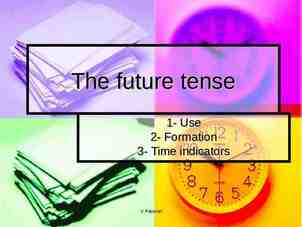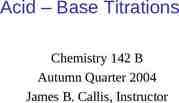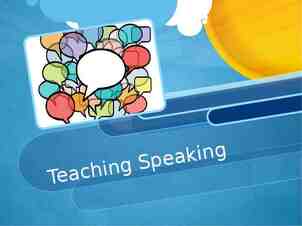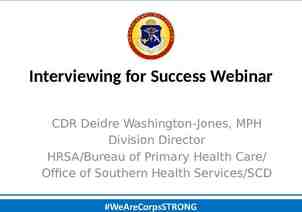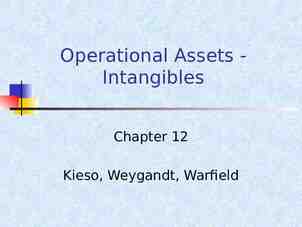Thank you for joining us today to discuss transition
34 Slides8.12 MB

Thank you for joining us today to discuss transition recovery services! We will begin the webinar in a few minutes.

Land Acknowledgement Text 855-917-5263 to identify Tribal lands on which you are currently located 2

We acknowledge the pain and trauma of these past months and over 400 years of racism in the United States. We stand with our communities of color. We also acknowledge the intersectionality of those who identify both as persons of color and individuals with disabilities. We commit to centering our work to dismantle systemic racism and disrupt ableist structures.

Transition Recovery Services for Students with an IEP (A Component of Recovery Services) May 20, 2021

Today’s Presenters Dr. Tania May Director of Special Education [email protected] Alexandra Toney Special Education Program Supervisor [email protected] a.us Jennifer Story Special Education Program Coordinator [email protected] s Dr. Cinda Johnson Center for Change and Transition Services (CCTS) [email protected] 5

We want to hear your voice! Survey: Highest Priority Need s for Students with Disabilitie s 2 minutes or less Please complete by May 21, 2021 6

Framing Today’s Discussion We acknowledge the efforts, challenges and successes of educators, students, and families during the COVID pandemic. Recovery services and transition recovery services are a frequent topic of questions from families and districts and the basis for multiple state complaints and due process hearings. This presentation is meant to be comprehensive in nature, and the inclusion of information, strategies, and examples is not meant to imply that districts are unaware or not already developing/implementing plans to address these needs. 7

Charting Our Path: Recovery Services Overview Transition Recovery Services Services, Collaboration & Documentation Timeline, Questions & Next Steps 8

IEP Recovery Service Decisions Layer on to LEA's Recovery Plans Guidance link: Academic and Student Well Being Recovery Pla n: Planning Guide 2021 Two laws* require LEAs to submit an Academic and Student Wellbeing Recovery Plan to OSPI by June 1, 2021, to be eligible to receive Secondary School Emergency Relief (ESSER III) funds IEP teams will also make individualized student decisions about Recovery Services These are additional services to address lack of appropriate progress on IEP goals due to missed or limited services or for other reasons as a result of the pandemic. Academic and Student Wellbeing Recovery Plans address the general needs of all students resulting from building closures and COVID-19: - Identification of specific diagnostic assessments by grade level to identify gap in learning/wellbeing - Inclusion of student data - General student recovery supports to address disproportional impacts of the pandemic which will include additional instruction, well-being support and extracurricular opportunities -Additional elements to improve positive learning and well being of students Federal Law: American Rescue Plan Elementary and Secondary School Emergency Relief (ARP ESSER) Fund under the American Rescue Plan (ARP) Act of 2021, Public Law 117-2. Washington State Law: LEA Academic and Student Well-being Recovery Plan (House Bill 1368; Sec. 12 9

What are Recovery Services? Recovery Services are additional services to address lack of appropriate progress on IEP goals due to missed or limited services or for other reasons as a result of the pandemic. Guidance link: Washington’s Roadmap for Special Education Recovery Services: 2021 & Beyond Districts will need to have recovery services discussions during IEP team meetings over the next year (at least). 10

Defining Recovery Services Similar to Compensatory Education, as both address lack of appropriate progress on IEP goals and Transition Plans. (Yes, some students may have access to both during this time.) Compensatory education services are traditionally provided as a remedy in a complaint or due process. Recovery Services are intended to be a proactive, collaborative response by the IEP team rather than a result of a dispute. Consider inclusive access and the student’s Least Restrictive Environment (LRE) when scheduling Recovery Services. Source: Washington’s Roadmap for Special Education Recovery Services: 2021 & Beyond (p. 11

Expectations for Recovery Services Recovery Services should be reviewed and considered for every student with an IEP: what was the expected level of progress on the pre-COVID IEP if the pandemic had NOT occurred? Families should not have to make a request for this process to occur; it should be part of the IEP process. Districts should also be responsive to parent requests, and not delay the discussion. The recovery service process spans PreK through age 21 (and beyond, for students who turned 21 during or after 2019-20). Timing: Prioritize based on individual need. Districts are NOT expected to immediately hold IEPs for every student. Source: Washington’s Roadmap for Special Education Recovery Services: 2021 & Beyond 12

Recommended Timelines for Recovery Services (Now) Summer 2021 Plan & collect progress data to determine district-level recovery services needs Combine/align with gen ed supplemental services; provide in addition to ESY Consider IEP team training needs to support recovery services decisions Schedule & hold some* IEP meetings Provide recovery services as needed for students with IEPs Fall 2021 & Spring 2022 Collect/track impact (services & progress) of Summer 2021 recovery services Discuss recovery services needs during IEP meetings Identify if changes are needed to recovery services Combine/align with gen ed supplemental services Provide recovery services as needed for students with IEPs 13

Recommended Timelines for Recovery Services (Next) Summer 2022 Review impact (services & progress) of Fall 2021 & Spring 2022 recovery services Fall 2022Spring 2023 Review impact of Summer 2022 recovery services Summer 2023 Review impact (services & progress) of Fall 2022 & Spring 2023 recovery services Schedule and hold some* IEP meetings Identify if additional recovery services are needed Combine/align with other summer programs Provide recovery services as needed for students with IEPs Discuss recovery service needs during IEP meetings Identify if additional recovery services are needed Combine/align with gen ed supplemental services Provide recovery services as needed for students with IEPs Schedule and hold some* IEP meetings Identify if additional recovery services are needed Provide recovery services as needed for students with IEPs More info coming soon on timelines for available funds for summer 2023 14

Priorities for Recovery Services Source: Washington’s Roadmap for Special Education Recovery Services: 2021 & Beyond 15

Priorities for Recovery Services Not hour-for-hour nor minute-for-minute but must not be based on a formula or calculation. Progress is measured based on pre-COVID IEP and Transition Plan (not Continuous Learning Plan (CLP) and/or any temporary limited services during the pandemic). Families and students are key partners in determining recovery services needs/amounts/schedules, as part of the IEP team. Provide language access, interpretation, and translation, as needed, to ensure parent participation. Source: Washington’s Roadmap for Special Education Recovery Services: 2021 & Beyond (p. 2, 16

Recovery Services Decision Flow Chart Present Levels Progress Services PreCOVID (Baseline ) What were the student’s present levels of performance before COVID? What was the student’s level of progress (on IEP goals) before COVID? From Spring 2020 to Present What concerns have been raised by the parent(s)? To what extent has the student’s level What special education and related of progress (on IEP goals) decreased or services were offered to the student in slowed compared to baseline levels? Spring 2020 and during the 2020–21 school year compared to the baseline offer of FAPE? Recovery Services Decision What is the difference between the student’s current present levels of performance, compared with the student’s expected level of performance had the pandemic not occurred? How and when will the student access the recovery services? What options are available for inclusive access, whether recovery services are provided during or outside of the school day? What special education and related services were documented on the student’s pre-COVID IEP? To what degree did the student access the offered services in Spring 2020 and during the 2020–21 school year? Based on the student’s current rate of progress, age, and developmental level, what is the timeline for the student to achieve the expected level of progress for the identified recovery services areas? Based on the student’s present levels of performance and missed or reduced services during the pandemic, what special education or related service areas or IEP goals require recovery services? How and how often will parents be For the identified recovery services informed of progress on recovery areas, what amount of services is services, including how the IEP team needed to help the student achieve the Source: Washington’s Roadmap for Special Education Recovery & Beyond will address any lack of reasonable level ofServices: progress2021 expected had the 17 (p. 5). progress? pandemic not occurred?

WA’s Roadmap for Transition Recovery Services

What are Transition Recovery Services? Transition recovery services are additional transition services for students with Individualized Education Programs (IEPs) that address lack of reasonable progress on IEP goals or the transition plan because of missed or limited special education and related services, or for other reasons due to the COVID-19 pandemic. Students of transition age (generally ages 16 to 21) may have experienced disruptions to work-based learning and community access due to the pandemic. Students who turned age 21 during the pandemic (2019-20 or 2020-21 school years) may also need transition recovery services. Note: The Washington State Legislature provided funding for the 2021–22 and 2022–23 school years to support transition recovery services for students who turned age 21 during or after the 2019–20 school year and have not yet earned 19 a diploma.

Transition Recovery Expectations Transition Recovery Services will be reviewed and considered for every student of transition age with an IEP: what was the expected level of progress on the pre-COVID IEP and Transition Plan if the pandemic had NOT occurred. Families and students should not have to make a request for this process to occur; it should be a part of the ongoing IEP process. Transition Recovery Services should: Address a lack of reasonable progress on IEP goals or the IEP transition Plan. Provide missed or limited special education or related services. Support the students to return to expected levels progress towards their post-secondary goals (as indicated in the IEP Transition Plan and High School and Beyond Plan). 20

Defining Transition Recovery Services Generally provided outside of the school day, including during the summer, over scheduled school breaks or on district release days. Examples of Recovery Services (based upon IEP goals, services and the IEP transition Plan): Support and facilitation to apply for eligibility with supported employment (DVR/DDA) and make other key agency linkages Fulfill job shadowing as indicated on the IEP Transition Plan. Additional in-person structured community or employment experiences Support to access and prepare for ACT/SAT Specially designed instruction to support an adult student to: Draft and revise a resume. Complete applications for jobs and further education. Set and maintain a weekly budget. Use functional communication strategies in community setting Independently use the public transportation system Source: Washington’s Roadmap for Special Education Recovery Services: 2021 & Beyond (p. 21

Documenting Transition Recovery Services Transition Recovery Services are generally documented in a prior written notice (PWN) similar to compensatory education. If transition recovery services are provided as part of a continuing student’s school day (in limited circumstances), the IEP must include the frequency, location, and duration of the services. If a parent or adult student disagrees with proposed transition recovery service options or timelines, continue engaging to discuss revisions and: Document parent/student input, the proposed plan, and whether there is disagreement with the offer. If an agreement cannot be reached, the parent or adult student may access dispute resolution options. Source: Washington’s Roadmap for Special Education Recovery Services: 2021 & Beyond (p. 6). 22

Prior Written Notice for Transition Recovery Services Proposed Action: Describe recovery services required (or not needed). Include timelines (start and end dates), schedules (frequency, duration, location), areas of service (including specific goals or transition services), progress monitoring, and LRE. Explanation: Describe current performance on IEP goals and current participation in transition services. Explain why recovery services are necessary (or unnecessary) for FAPE in light of the pandemic. Identify the rationale behind offering or declining recovery services. Data/Information Considered: Progress reporting, student participation in remote instruction, benchmark assessments, teacher observations, evaluations, grades, IEP goals, work completion, formative assessments, unit assessments, informal reading and math inventories, parent and student input, participation in transition services, etc. Other Options Considered: If recovery services are provided, other options considered could be not providing recovery services. Provide a rationale for why this option was rejected—for example, student data supported a need for recovery services. Other Factors: Ideally include a timeline for when the request for recovery services 23

Providing Transition Recovery Services The IEP team determines a student’s need for transition recovery services, including the schedule, anticipated timeline, areas of service, and amount of services. Schedules & Timelines considerations: Decisions are individualized based on the student's present level of performance compared to expected progress if the pandemic had not occurred. Should be inclusive and aligned to the student’s LRE to the greatest extent possible. Should consider agency linkages, current employment, and/or access to services from other adult agencies. 24

Potential Barriers to Recovery Services

Staffing and Transportation Staffing Options include: Supplemental contracts for school district employees Contracting with licensed or certificated staff or other educational entities Working with other school district staff to provide additional services under the direct supervision and monitoring of special education staff Collaborating with neighboring school districts and educational service districts (ESDs) Interspersing recovery service with short breaks Transportation IEP teams should engage in proactive and collaborative problem solving between with local and regional transportation departments to ensure students have appropriate transportation Options include: District and regional transportation Shared agreements Private Transportation options Parent reimbursement for travel costs 26

NEW State TransitionSpecific Apportionment Funding Amount: State appropriations of 5 million for 2021-22 and 12 million for 2022-23; and 7 million of the elementary and secondary school emergency relief (ESSER) III account Purpose: For the extension of transition services for: Students with disabilities who turned age 21 during the 2019-20 or 2020-21 school years, Did not graduate with a regular diploma, AND Require recovery services on or after July 1, 2021, as determined by the student's IEP team. 27

NEW State TransitionSpecific Apportionment Funding (cont.) Districts will report (via an OSPI-developed Excel or SmartSheet-based tool), the number of students with valid IEPs that qualify them for transition recovery services for July (due July 15) and August (due August 15). The district will receive one average rate per student served. The funding rate will be calculated by taking the combined total of the basic education rate and the special education rate for the district, times the annualized (9-month) headcount of eligible students. Allocations will be provided in July and August based on the number of students served. OSPI may need to prorate so as to not exceed the legislativelyapproved maximum allowable expenditure for this purpose. Questions? Contact [email protected] 28

Other Existing and Additional Funding Sources for Recovery Services CARES Act, ESSER funds I CRRSAA Act, ESSER funds II ARP Act, ESSER funds III (which also includes additional dedicated IDEA funds to districts) Although students over the age of 21 can no longer be counted for state/federal special education funding, the following sources may be used to provide transition recovery services: IDEA funds to districts State special education funds to districts State basic education funds to districts Braiding of funds (e.g., federal and state to address student groups) 29

Frequently Asked Questions

What if parents refused previous offer of services? Schools may have offered special education and related services, including transition services, during the pandemic, and families may have declined those services or chosen to remain remote for a variety of reasons. In compensatory education, an administrative law judge or OSPI considers mitigating factors that could reduce a compensatory award, such as a refusal of offered services. IEP Teams should make an individualized student-centered decision as to what transition recovery services are needed by considering: The availability and impact to the students if offered services were not accessed. A family's reasons for refusal and potential solutions for students to access support if needed. The student’s needs and the impact of COVID on the student. 31

How Can I Learn More? Q&A document is being revised to reflect Recovery Services guidance and FAQs. Should be reposted this month. Information Session for Families on Transition Recover y Services Wed, May 26, 2021, 6:30 to 7:30 pm OSPI Special Ed Bill & Budget Report: 2020-21 Legislative Se ssion 32

Questions? https://media.istockphoto.com/photos/red-flag-with-question-mark-on-map-background-3d-rendering-picture-id537 276026 33

Thank you Thank you for your work on behalf of Washington state's students with disabilities, through uncertain and rapidly changing circumstances, in pursuit of the provision of specially designed instruction to support improve post-school outcomes and ensuring access and progress in the general education curriculum. 34

